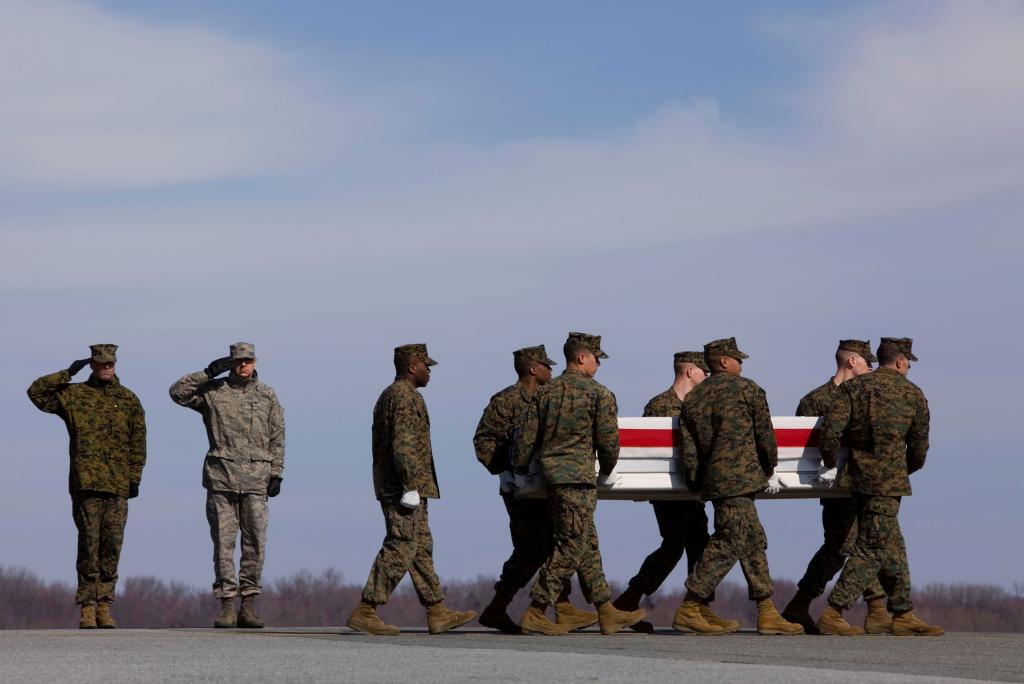MARJAH, Afghanistan – Outnumbered and outgunned, Taliban fighters are mounting a tougher fight than expected in Marjah, Afghan officials said Sunday, as U.S.-led forces converged on a pocket of militants in a western section of the town.
Despite ongoing fighting, the newly appointed civilian chief for Marjah said he plans to fly into the town Monday for the first time since the attack to begin restoring Afghan government control and winning over the population after years of Taliban rule.
With fighter jets, drones and attack helicopters roaring overhead, Marine and Afghan companies advanced Sunday on a 2-square-mile area where more than 40 insurgents were believed holed up.
”They are squeezed,” said Lt. Col. Brian Christmas, commander of 3rd Battalion, 6th Marine Regiment. ”It looks like they want to stay and fight but they can always drop their weapons and slip away. That’s the nature of this war.”
U.S. officials signaled their intention to attack Marjah, a major Taliban supply and opium-smuggling center, months ago, apparently in hopes the insurgents would flee and allow the U.S.-led force to take over quickly and restore an Afghan government presence.
Instead, the insurgents rigged Marjah with bombs and booby traps to slow the allied attack, which began Feb. 13. Teams of Taliban gunmen stayed in the town, delivering sometimes intense volleys of gunfire on Marine and Afghan units slogging through the rutted streets and poppy fields.
Afghan Defense Ministry spokesman Gen. Mohammad Zahir Azimi said the U.S. and its allies had expected the Taliban to leave behind thousands of hidden explosives, which they did. But they were surprised to find that so many militants stayed to fight.
”We predicted it would take many days. But our prediction was that the insurgency would not resist that way,” Azimi told The Associated Press in Kabul.
In a statement Sunday, NATO acknowledged that insurgents were putting up a ”determined resistance” in various parts of Marjah, although the overall offensive is ”on track.”
Marine spokesman Lt. Josh Diddams said Sunday that Marines and Afghan troops were continuing to run into ”pockets of stiff resistance” though they were making progress. Diddams said no area is completely calm yet although three markets in town — of about 80 square miles — are at least partially open.
”Everywhere we’ve got Marines, we’re running into insurgents,” Diddams said. In many cases, the militants are fighting out of bunkers fortified with sandbags and other materials.
Before the assault, U.S. officers said they believed 400 to 1,000 insurgents were in Marjah, 360 miles southwest of Kabul. About 7,500 U.S. and Afghan troops attacked the town, while thousands more NATO soldiers moved into other Taliban strongholds in surrounding Helmand province.
It was the largest joint NATO-Afghan operation since the Taliban regime was ousted from power in 2001.
NATO’s civilian chief in Afghanistan, Mark Sedwill, said the military operation was moving slowly ”because of essentially the ruthlessness of the opponent we face and the rules that we’ve set for ourselves” to protect civilians.
”We could have swept through this place in a couple of days but there would have been a lot of casualties.” he said.
NATO said one service member died in a roadside bombing Sunday, bringing the number of international troops killed in the operation to 13. At least one Afghan soldier has been confirmed dead. Senior Marine officers say intelligence reports suggest more than 120 insurgents have died.
The Marjah operation is a major test of a new NATO strategy that stresses protecting civilians over routing insurgents quickly. It’s also the first major ground operation since President Obama ordered 30,000 reinforcements to Afghanistan.
In a setback to that strategy, the Dutch prime minister said Sunday that his country’s 1,600 troops would probably leave Afghanistan this year. Prime Minister Jan Peter Balkenende spoke a day after his government collapsed when a coalition partner insisted the Dutch troops leave in August as planned.
Most Dutch troops are stationed in Uruzgan province, which borders Helmand to the north. Afghan officials expressed concern that Taliban fighters driven out of Helmand could regroup in Uruzgan without a robust NATO presence.
Life in Marjah, meanwhile, remains far from normal. The price of food had soared, with the price of sugar and other staples doubling.
Send questions/comments to the editors.



Success. Please wait for the page to reload. If the page does not reload within 5 seconds, please refresh the page.
Enter your email and password to access comments.
Hi, to comment on stories you must . This profile is in addition to your subscription and website login.
Already have a commenting profile? .
Invalid username/password.
Please check your email to confirm and complete your registration.
Only subscribers are eligible to post comments. Please subscribe or login first for digital access. Here’s why.
Use the form below to reset your password. When you've submitted your account email, we will send an email with a reset code.